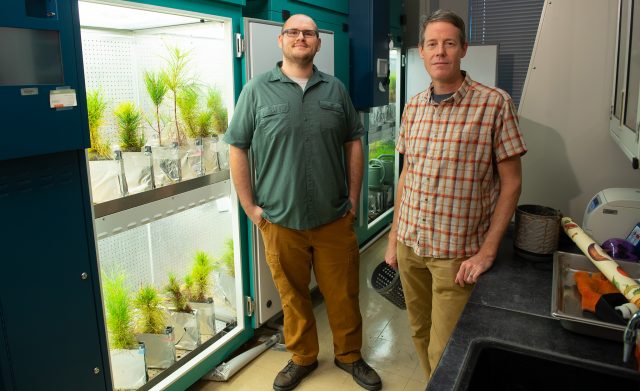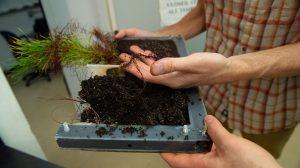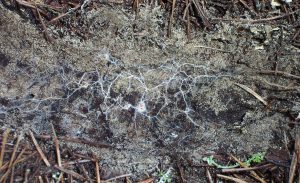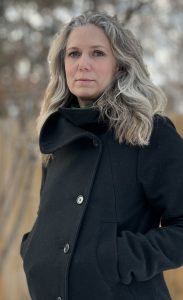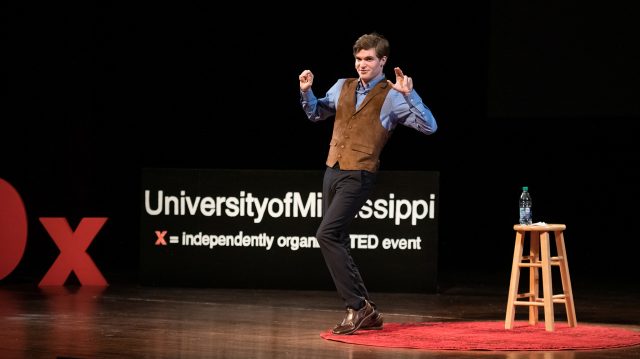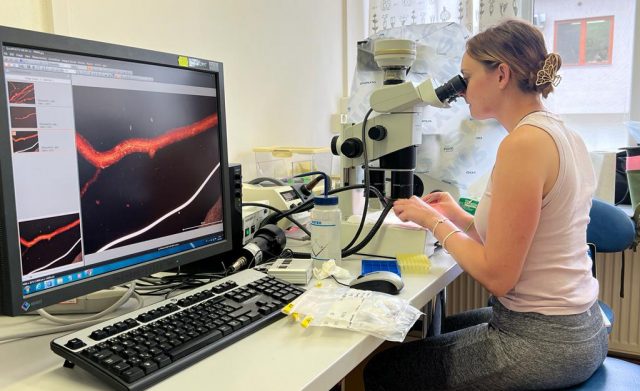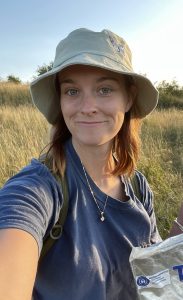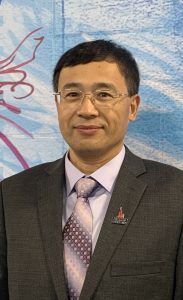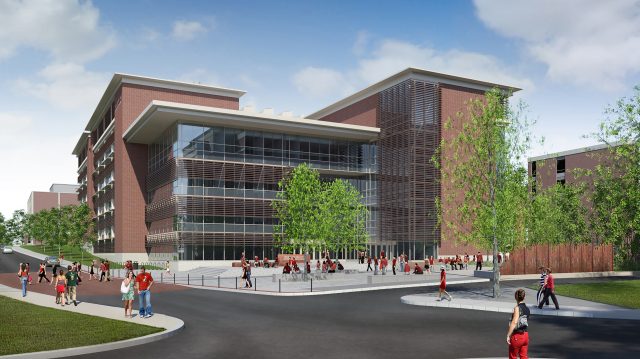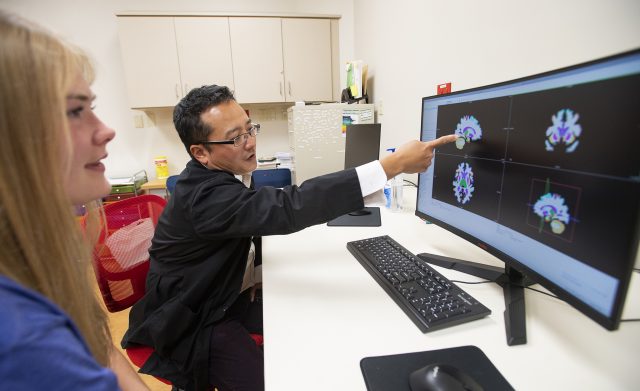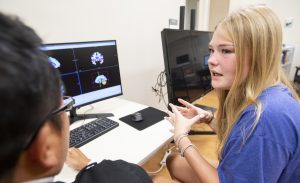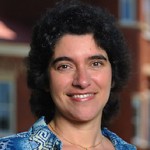
Dr. Tammy Goulet researches symbiosis and host-symbiont genotypic combinations, marine ecology, coral reefs, and coral-algal physiology.
Dr. Tammy Goulet coauthored the manuscript that will be published in the peer-reviewed journal PeerJ. Below is the abstract and the international team of co-authors.
Abstract
Within microeukaryotes, genetic variation and functional variation sometimes accumulate more quickly than morphological differences. To understand the evolutionary history and ecology of such lineages, it is key to examine diversity at multiple levels of organization. In the dinoflagellate family Symbiodiniaceae, which can form endosymbioses with cnidarians (e.g., corals, octocorals, sea anemones, jellyfish), other marine invertebrates (e.g., sponges, molluscs, flatworms), and protists (e.g., foraminifera), molecular data have been used extensively over the past three decades to describe phenotypes and to make evolutionary and ecological inferences. Despite advances in Symbiodiniaceae genomics, a lack of consensus among researchers with respect to interpreting genetic data has slowed progress in the field and acted as a barrier to reconciling observations. Here, we identify key challenges regarding the assessment and interpretation of Symbiodiniaceae genetic diversity across three levels: species, populations, and communities. We summarize areas of agreement and highlight techniques and approaches that are broadly accepted. In areas where debate remains, we identify unresolved issues and discuss technologies and approaches that can help to fill knowledge gaps related to genetic and phenotypic diversity. We also discuss ways to stimulate progress, in particular by fostering a more inclusive and collaborative research community. We hope that this perspective will inspire and accelerate coral reef science by serving as a resource to those designing experiments, publishing research, and applying for funding related to Symbiodiniaceae and their symbiotic partnerships.
Davies SW1*, Gamache MH2, Howe-Kerr LI3, Kriefall NG1, Baker AC4, Banaszak AT5, Bay LK6, Bellantuono AJ7, Bhattacharya D8, Chan CX9, Claar DC10, Coffroth MA11, Cunning R12, Davy SK13, del Campo J14, Díaz-Almeyda EM15, Frommlet JC16, Fuess LE17, González-Pech RA18, Goulet TL19, Hoadley KD20, Howells EJ21, Hume BCC22, Kemp DW23, Kenkel CD24, Kitchen SA25, LaJeunesse TC18, Lin S26, McIlroy SE27, McMinds R28, Nitschke MR6, Oakley CA13, Peixoto RS29, Prada C30, Putnam HM30, Quigley KM31, Reich HG30, Reimer JD32, Rodriguez-Lanetty M7, Rosales SM33, Saad OS34, Sampayo EM35, Santos SR36, Shoguchi E37, Smith EG38, Stat M39, Stephens TG8, Strader ME40, Suggett DJ41, Swain TD42, Tran C43, Traylor-Knowles N4, Voolstra CR22, Warner ME44, Weis VM45, Wright RM46, Xiang T38, Yamashita H47, Ziegler M48, Correa AMS3* and Parkinson JE2*
Corresponding authors(*)
1Department of Biology, Boston University, Boston, MA, USA
2Department of Integrative Biology, University of South Florida, Tampa, FL, USA
3Department of BioSciences, Rice University, Houston, TX, USA
4Department of Marine Biology and Ecology, Rosenstiel School of Marine and Atmospheric Science, University of Miami, Miami, FL, USA
5Unidad A Académica de Sistemas Arrecifales, Universidad Nacional Autónoma de Mexico, Puerto Morelos, Mexico
6Reef Recovery, Adaptation, and Restoration, Australian Institute of Marine Science, Townsville, QLD, Australia
7Department of Biological Sciences, Florida International University, Miami, FL, USA
8Department of Biochemistry and Microbiology, Rutgers University, New Brunswick, NJ, USA
9Australian Centre for Ecogenomics, School of Chemistry and Molecular Biosciences, University of Queensland, Brisbane, Australia
10Hakai Institute, Campbell River, Canada
11Department of Geology, University at Buffalo, Buffalo, NY, USA
12Daniel P. Haerther Center for Conservation and Research, John G. Shedd Aquarium, Chicago, IL, USA
13School of Biological Sciences, Victoria University of Wellington, Wellington, New Zealand
14Biodiversity Program, Institut de Biologia Evolutiva, Universitat Pompeu Fabra, Barcelona, Spain
15Department of Natural Sciences, New College of Florida, Sarasota, FL, USA
16Centre for Environmental and Marine Studies, Department of Biology, University of Aveiro, Aveiro, Portugal
17Department of Biology, Texas State University, San Marcos, TX, USA
18Department of Biology, Pennsylvania State University, University Park, PA, USA
19Department of Biology, University of Mississippi, Oxford, MS, USA
20Department of Biological Sciences, University of Alabama, Tuscaloosa, AL, USA
21National Marine Science Centre, Faculty of Science and Engineering, Southern Cross University, Coffs Harbour, NSW, Australia
22Department of Biology, University of Konstanz, Konstanz, Germany
23Department of Biology, University of Alabama at Birmingham, Birmingham, AL, USA
24Department of Biological Sciences, University of Southern California, Los Angeles, CA, USA
25Divsion of Biology and Biological Engineering, California Institute of Technology, Pasadena, CA, USA
26Department of Marine Sciences, University of Connecticut, Storrs, CT, USA
27Swire Institute of Marine Science, School of Biological Sciences, The University of Hong Kong, Hong Kong
28Center for Global Health and Infectious Disease Research, University of South Florida, Tampa, FL, USA
29Red Sea Research Center, Division of Biological and Environmental Science and Engineering, King Abdullah University of Science and Technology, Thuwal, Saudi Arabia
30Department of Biological Sciences, University of Rhode Island, Kingston, RI, USA
31Minderoo Foundation, Perth, WA, Australia
32MISE, Department of Biology, Chemistry and Marine Sciences, Faculty of Science, University of the Ryukyus, Nishihara, Okinawa, Japan
33The Cooperative Institute For Marine And Atmospheric Studies, University of Miami, Miami, FL, USA
34Department of Biological Oceanography, Red Sea University, Port-Sudan, Sudan
35School of Biological Sciences, The University of Queensland, St. Lucia, QLD, Australia
36Department of Biological Sciences, University at Buffalo, Buffalo, NY, USA
37Marine Genomics Unit, Okinawa Institute of Science and Technology Graduate University, Okinawa, Japan
38Department of Biological Sciences, University of North Carolina at Charlotte, Charlotte, NC, USA
39School of Environmental and Life Sciences, University of Newcastle, Callaghan, NSW, Australia
40Department of Biology, Texas A&M University, College Station, TX, USA
41Climate Change Cluster, University of Technology Sydney, Ultimo, NSW, Australia
42Department of Marine and Environmental Science, Nova Southeastern University, Dania Beach, FL, USA
43Department of Biology, University of San Diego, San Diego, CA, USA
44School of Marine Science and Policy, University of Delaware, Lewes, DE, USA
45Department of Integrative Biology, Oregon State University, Corvallis, OR, USA
46Department of Biological Sciences, Smith College, Northampton, MA, USA
47Fisheries Technology Institute, Japan Fisheries Research and Education Agency, Ishigaki, Okinawa, Japan
48Department of Animal Ecology & Systematics, Justus Liebig University Giessen, Giessen, Germany
